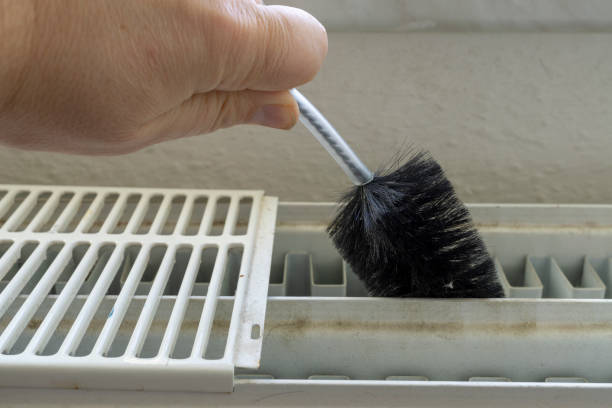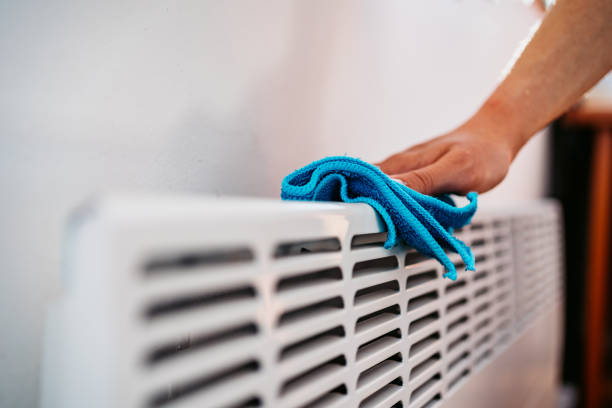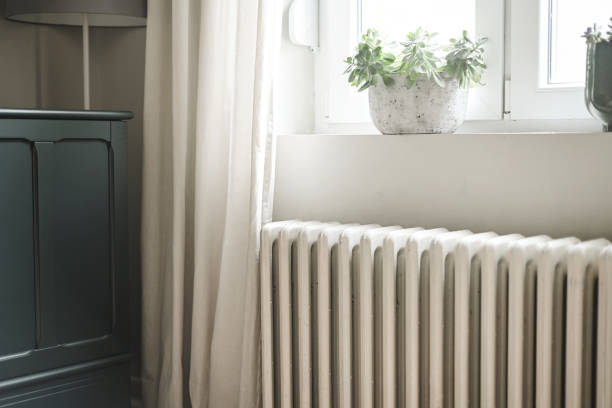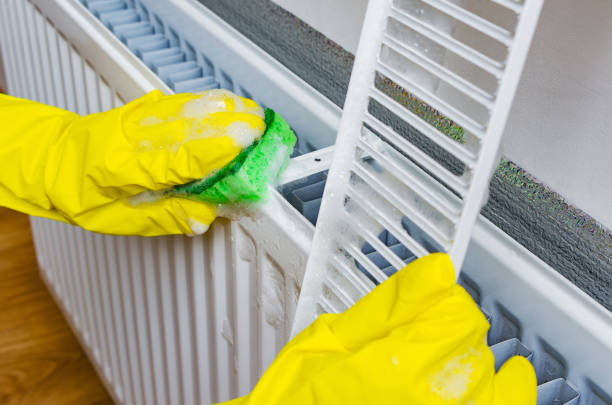Maintaining and keeping your radiators clean is important for a number of reasons. First and foremost, clean radiators are more efficient at heating your home, as dirt and grime can block the flow of heat and prevent the radiator from functioning properly.
In addition, clean radiators are less likely to develop problems or break down, which can save you money on repairs and maintenance. Keeping your radiators clean can also help to improve the air quality in your home, as dust and other particles can accumulate on the radiator and be circulated through the air when the heat is turned on.
Finally, clean radiators simply look better and can help to improve the overall appearance of your home. By following these tips and regularly cleaning your radiators, you can ensure that they are functioning at their best and helping to keep your home warm and comfortable.

Maintaining and cleaning your radiators is an important part of keeping your home warm and comfortable. From vacuuming and wiping down the surface to using mild cleaners and following manufacturer’s instructions, these tips will help you keep your radiators in top condition. Whether you have a cast iron, steel, or aluminium radiator, regular cleaning and maintenance will help ensure that it is functioning efficiently and looking its best.
Tips for maintaining and cleaning your house radiators
Step 1
First and foremost, make sure to turn off the heat and let the radiator cool completely before cleaning it. This is important for safety reasons, as the radiator can become very hot while the heat is on and could cause burns if touched.
Step 2
Vacuum the radiator to remove any dust or debris that may have accumulated on it. Use a brush attachment to get into the crevices and corners. This will help to remove any loose dirt or dust that may have accumulated on the surface of the radiator.
Step 3
Wipe down the radiator with a damp cloth or sponge to remove any dirt or grime. Be sure to wring out the cloth or sponge well to avoid dripping water onto the floor. This will help to remove any stuck-on dirt or grime that the vacuum may not have been able to reach.
Step 4
If the radiator is particularly dirty, you may need to use a mild detergent or all-purpose cleaner to help loosen and remove any stuck-on dirt or grime. Be sure to rinse the radiator thoroughly with water after using any cleaning products. This will help to remove any stains or tougher grime that may not have come off with just a damp cloth or sponge.

Step 5
For designer or decorative radiators, you may need to be more careful when cleaning to avoid damaging the finish. In these cases, it is usually best to use a soft cloth and a mild cleaner specifically designed for use on decorative surfaces. This will help to protect the finish of the radiator and ensure that it stays looking its best.
Step 6
Towel radiators can be cleaned in much the same way as other types of radiators. However, be sure to avoid getting the towels wet, as this can cause them to become musty or develop mould. If the towels are particularly dirty, you may need to remove them and wash them separately. This will help to keep the towels clean and fresh, and prevent any unpleasant odours from developing.
Step 7
If you have a steam radiator, it is important to bleed the radiator regularly to remove any air that may have become trapped in the system. This will help the radiator to heat up more efficiently and can also prevent it from making knocking noises. To bleed a steam radiator, you will need a radiator key (a small tool that fits into the bleed valve) and a towel or cloth to catch any water that may be released.
To bleed the radiator, first locate the bleed valve, which is usually a small valve located near the top of the radiator. Insert the radiator key into the valve and turn it anticlockwise until you hear a hissing sound. This will release any trapped air. Once the air has been released, close the valve by turning it clockwise and replace the key. Be sure to check the pressure in the system after bleeding the radiator and add more water if necessary.
How to clean cast iron, steel or aluminium radiators

Radiators made from different materials may require slightly different cleaning methods, but the basic steps for cleaning any radiator are generally the same. Here are a few tips for cleaning radiators made from specific materials:
- Cast iron radiators: Cast iron radiators are durable and long-lasting, but they can be heavy and may require some extra effort to clean. To clean a cast iron radiator, first turn off the heat and let it cool completely. Then, use a vacuum to remove any dust or debris from the surface of the radiator. Wipe down the radiator with a damp cloth or sponge, using a mild detergent if necessary to remove any stuck-on dirt or grime. Rinse the radiator thoroughly with water and dry it off with a clean cloth.
- Steel radiators: Steel radiators are common and relatively easy to clean. To clean a steel radiator, follow the same steps as for a cast iron radiator. Be sure to use a mild detergent if necessary to avoid damaging the finish of the radiator.
- Aluminium radiators: Aluminium radiators are lightweight and relatively easy to clean, but they can be prone to corrosion if not properly maintained. To clean an aluminium radiator, turn off the heat and let it cool completely. Use a vacuum to remove any dust or debris, and then wipe the radiator down with a damp cloth or sponge. Be sure to use a mild detergent if necessary to remove any stuck-on dirt or grime, and rinse the radiator thoroughly with water to remove any soap or cleaning products. Dry the radiator off with a clean cloth. Avoid using harsh or abrasive cleaners on aluminium radiators, as these can damage the finish.
In general, it is best to use a soft cloth and a mild cleaner when cleaning any type of radiator, as harsh or abrasive cleaners can damage the finish or cause corrosion. Be sure to follow the manufacturer’s instructions for cleaning and maintaining your radiator to ensure that it stays in good condition.
What are the best tools or gadgets to clean radiators?
Disclosure: Some of the links below are Amazon affiliate links. This means that, at no cost to you, we may earn an affiliate commission if you click through the link and complete a purchase.
Here are a few tools or gadgets that can be helpful for cleaning radiators:
Vacuum: A vacuum with a brush attachment can be very effective for removing dust and debris from the surface of the radiator. The brush attachment can help to get into the crevices and corners of the radiator, making it easier to remove all of the dirt and dust.
Damp cloth or sponge: A damp cloth or sponge is a simple but effective tool for wiping down the surface of the radiator and removing dirt and grime. Be sure to wring out the cloth or sponge well to avoid dripping water onto the floor.
Mild detergent or all-purpose cleaner: If the radiator is particularly dirty or if you need to remove any stains or stuck-on dirt, you may need to use a mild detergent or all-purpose cleaner. Be sure to rinse the radiator thoroughly with water after using any cleaning products.
Radiator key: You will need a radiator key (a small tool that fits into the bleed valve) to bleed the radiator and remove any trapped air.
Towel or cloth: A towel or cloth can be useful for drying off the radiator after cleaning and for catching any water that may be released when bleeding a steam radiator.
Overall, the best tools and gadgets for cleaning radiators will depend on the specific needs of your radiator and the type of cleaning that is required. A vacuum and a damp cloth or sponge are generally sufficient for most cleaning tasks, but you may need to use additional tools or cleaners if the radiator is particularly dirty or if you need to remove any stains or stuck-on dirt.
Can I pour water down my radiator to clean it?
It is generally not recommended to pour water directly onto a radiator to clean it. While water can help to remove dirt and grime from the surface of the radiator, it can also cause damage if it seeps into the inner workings of the radiator or the wall behind it. In addition, pouring water onto a hot radiator can cause it to steam, which can be dangerous if you are not careful.

Why does my radiator keep getting dusty?
There are a few common reasons why radiators may become dusty over time:
- Lack of maintenance: If the radiator is not cleaned and maintained regularly, dust and debris can accumulate on the surface and in the crevices of the radiator. This can cause the radiator to become less efficient and can also contribute to poor indoor air quality.
- Poor ventilation: If the room in which the radiator is located has poor ventilation, dust and other particles can accumulate more easily. This is especially true if the room is not well-sealed or if there are drafts coming in from outside.
- Dry air: Radiators can also attract dust if the air in the room is particularly dry. This is because dry air can cause dust and other particles to become more easily airborne, making it easier for them to settle on surfaces like radiators.
To prevent your radiator from getting dusty, it is important to clean and maintain it regularly and to ensure that the room in which it is located has good ventilation. Using a humidifier to add moisture to the air can also help to reduce the amount of dust in the room and make it easier to keep the radiator clean.
